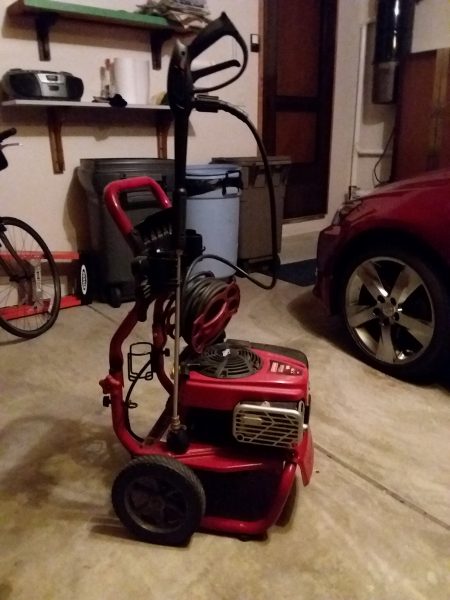A number of years ago, Ted and I bought a power washer. It’s been a sturdy little machine and we’ve spent many hours using it. In fact, its initial run involved 8-10 hour days seven days a week for about three weeks while we used it to strip a bad seal from our 2,000+ square feet of concrete. (Long story.) Not once did the power washer falter. Our current project is washing the vinyl siding on our house and, unfortunately, our trusty power washer just couldn’t finish the job. It died with the back side of the house still dirty.
We liked the model we had, so we went to Sears on Friday night and bought the new version of the same model. Saturday’s forecast promised sunny skies with temperatures in the low 80s–a good day to finish washing the siding. Ted started up the engine and water gushed out from the soap connection. After trying everything we could think of to solve the problem, we went to Sears to ask for help.
Oh goody! The salesman went online to look up the user’s manual for a solution. I’d already told him that the user’s manual says “connect soap dispenser” and that’s it. Now he believes me. Because we’d put gasoline into the tank, we could not return the unit to Sears; instead, we were directed to take it to their nearby authorized repair shop. We did, and we had to leave the power washer there for evaluation, etc. Result: the back of the house is still dirty.
Today, the service person informed us that the pump is defective. It is missing a regulator, so the water doesn’t enter and leave the unit properly. Simply replacing the pump would be much too easy. First, the service shop has to report the problem to Sears. Then Sears has to approve the repair as a warranty issue. After the approval, the repair shop can order the part and, when it arrives, they can install it. I guess we’re going to miss the window of beautiful weather this week for finishing up the house washing.
They just don’t make them like they used to, do they?

You were a good little machine and you worked hard. R.I.P.